Feliz Navidad or Spanish Christmas. You won’t believe who brings the children’s presents!
5. 4. 2023
What will you learn in this article?
How is the lottery drawing related to Christmas?
Why do children “take care” of a wooden log?
What unusual character do the Spanish add to the nativity scene?
What delicacies belong to the Christmas feast?
Let’s get closer to Christmas in Spain!
When is Christmas celebrated in Spain?
Although Christmas in Spain (Día de Navidad) is traditionally celebrated on December 25, unofficially, the Christmas holidays start three days earlier. Lotería de Navidad, a Christmas lottery whose tradition dates back to the middle of the 18th century, has been drawn on December 22 for many years.
In addition to December 25, when the whole family gathers for lunch and gifts are given, another important day for Spanish Christmas is December 28, or Día de los Santos Inocentes, the day of the Holy Innocents.
It is similar to April Fool’s Day when people try to fool themselves as much as possible and perform various pranks. However, the origin of this holiday comes from the biblical slaughter of innocent women by Herod.
Christmas in Spain ends on January 6 with Three Kings. The day before, the towns hold the “cavalgata de los Reyes”, or the ride of the kings, during which the kings scatter various sweets.
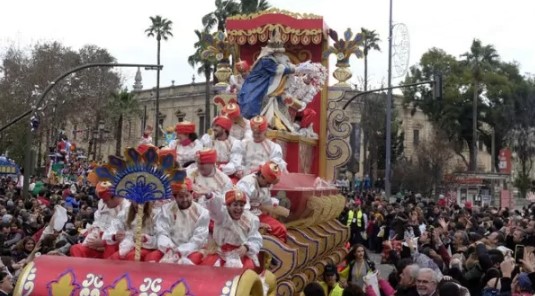
Who brings the children’s presents?
Traditionally, the Reyes Magos, the Three Kings, deliver gifts to Spanish children on the night between January 5 and 6. This means Spanish children must wait another twelve days for their presents.
According to tradition, kings bring gifts on their camels, so children prepare buckets or bowls of water in front of the door in the evening if the camels are thirsty. The Three Kings leave gifts for them in their shoes.
Today, however, this custom is beginning to change. Children receive gifts on Christmas Day and Three Kings. On December 25, Papa Noel, the Spanish equivalent of Santa Claus, brings gifts.
What are the symbols and customs of Spanish Christmas?
Similar articles
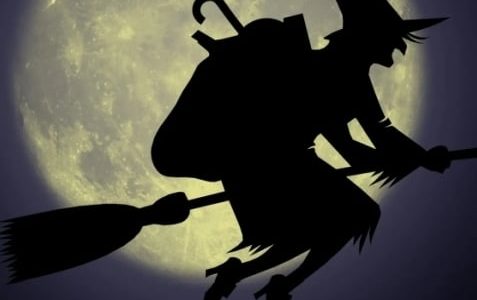
How do Italians celebrate Christmas and what are their customs?
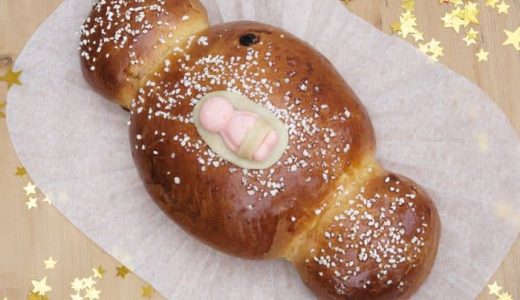
Do you know how Christmas is celebrated in Belgium? Learn about Belgian Christmas traditions in our article

How is the traditional French Christmas celebrated? Who is Père Noël and what is Réveillon?

Learn about Bulgarian Christmas customs and bake delicious baklava!
In certain regions, local characters bring gifts to children during the holiday season. One of the most interesting ones is the Catalan Caga Tio. It is a large wooden log that families bring home in mid-December.
They paint its eyes and mouth and put on a cap, officially making it a Caga Tió. After that, the log is partially covered with a blanket, and the children bring it food for the next few days. The tradition says that the more food the children give, the more gifts they will receive.
On Christmas Eve, the whole family gathers at Caga Tió, and the children start banging on the blanket with a stick with their eyes closed. At the same time, they sing a not-quite-decent song. Miraculously, the gifts Caga Tió “dropped” for them appear under the blanket.
By the way, the Spaniards regularly place a caganera, a squatting figure, in their home nativity scene.
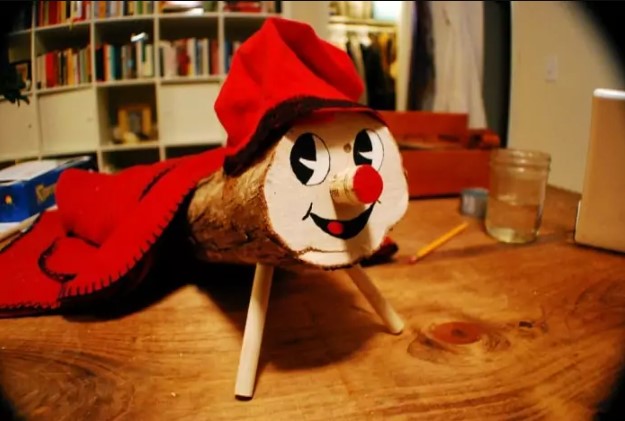
What is eaten in Spain at Christmas?
The most essential meal in Spain is dinner on Christmas Eve, i.e., the eve of the main holiday, and lunch on Christmas Day. The menu varies from region to region; jamon serrano (dried ham from a white pig), olives, and various types of cheese are usually served as a first course.
The main dish can be lamb with vegetables, stuffed turkey, or fish. The most popular sweets include marzipan figurines, turrón – Turkish honey-like candy, and polvorón, a candy made of flour, lard, sugar, and cinnamon.
How to bake the polvorón?
If you like sweets and cookies, try polvorón (or “polvorones” in Spanish) this Christmas. The name of this confectionery is derived from the word polvo, meaning dust. The consistency is so crumbly that it resembles dust, and it dissolves in the mouth with each bite.
Ingredients:
- 1 cup all-purpose flour
- 1/4 cup almond flour
- 1/2 cup lard
- 1/4 cup of powdered sugar
- 2 tablespoons anise liqueur
- 1/2 teaspoon of salt
- cinnamon
- powdered sugar for sprinkling
Method:
- Mix plain flour and almond flour in a bowl.
- Spread the mixture on a baking sheet lined with baking paper.
- “Fry” the flours in an oven preheated to 266°F (with a fan) for about 20 minutes.
- Then, take them out of the oven and let them cool for at least 30 minutes.
- Once cooled, transfer the toasted flour to a food processor bowl and add the powdered sugar, salt, and a pinch of cinnamon.
- Then add the anise liqueur and cold lard and mix with a kneading hook until the ingredients are combined.
- Transfer the dough to the work surface and knead it with your hands.
- Since there are no eggs in the dough, it will not rise well at first, but you will end up with a smooth and uniform dough.
- Wrap the dough in cling film and let it rest at room temperature for 20 minutes.
- After this time, roll out the dough to a thickness of 0,4 inches and cut the cookies with a round cookie cutter.
- Carefully place the cookie pieces on a baking sheet lined with parchment paper.
- Bake in a static oven heated to 320°F for about 20 minutes.
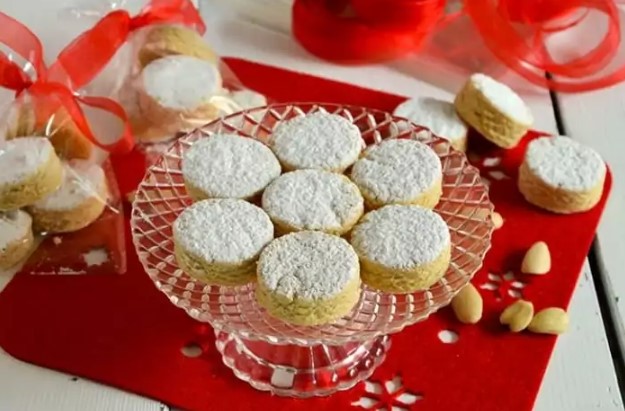
After baking, the cookie will still be a little soft, so if you touch it with your fingertip, some of the dough will stick; don’t worry – it will harden after it cools. Finally, sprinkle the polvorón with powdered sugar.

